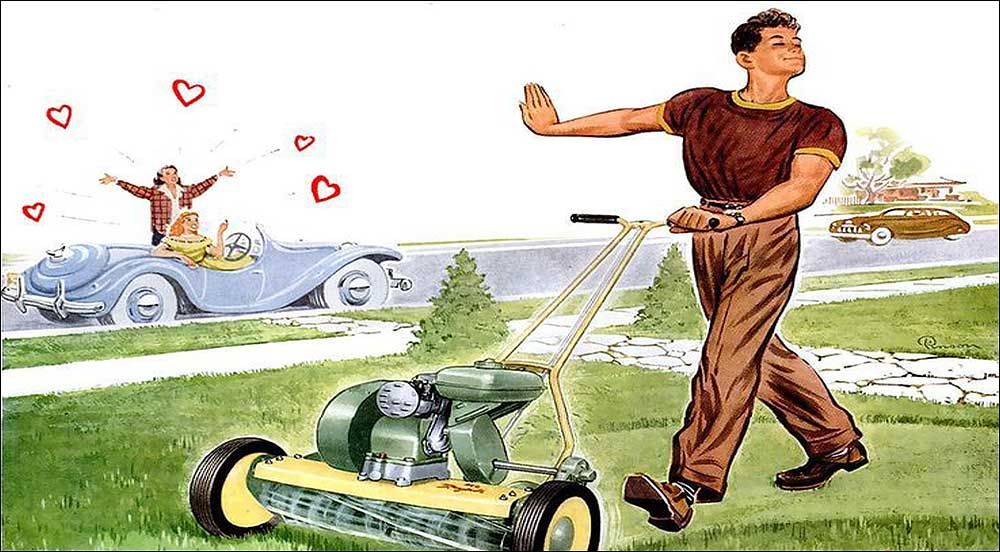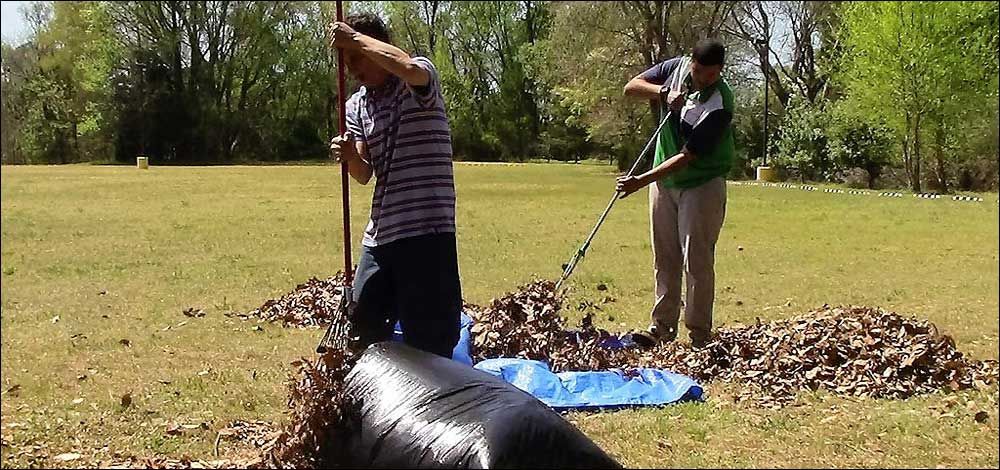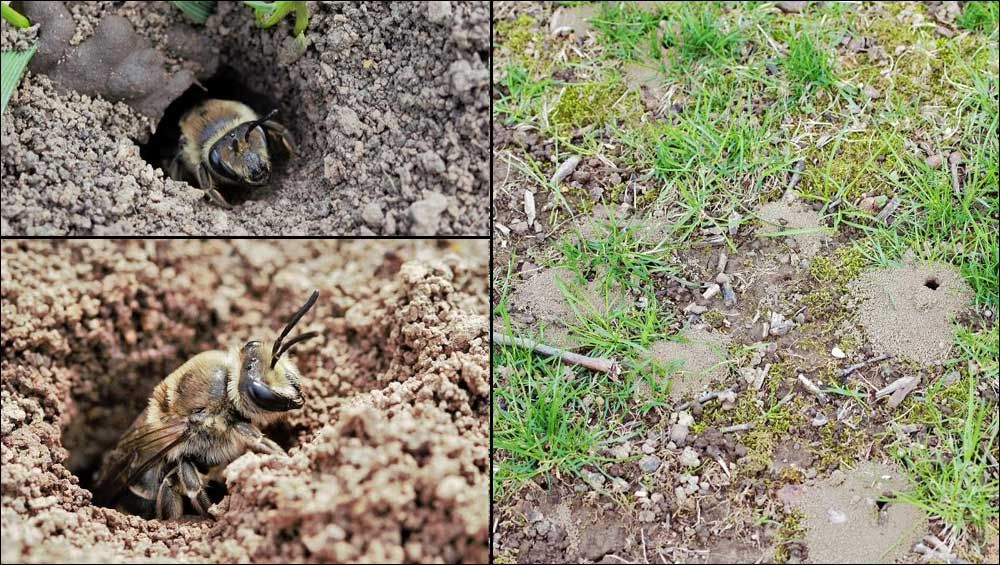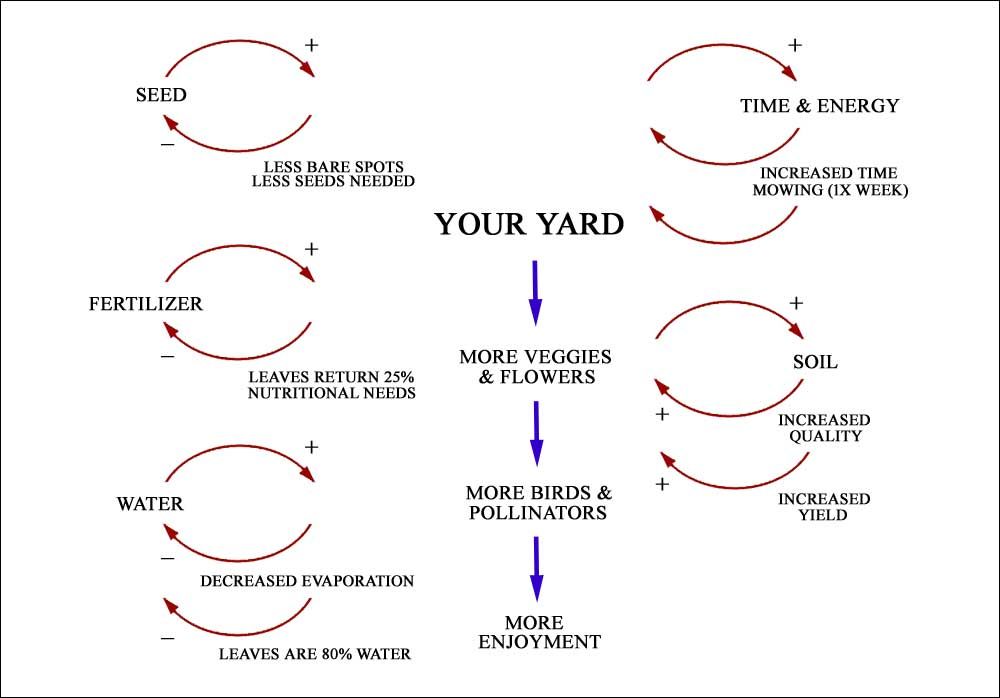Fall Leaves and Systems Thinking
Owning a home with a yard comes with many challenges, one of them of course is the ritual of mowing the grass. Sometimes at the height of the summer, its a weekly ritual that leaves bags and bags of clippings on the curb for the city to pick up on trash day. Hopefully your city composts this waste and doesn't just deposit it in a nearby landfill. Not only does that increase the mega tons of national waste going into the ground but the decaying organic waste produces methane, a powerful green house gas.
Many people have discovered the convenience of mulching their grass clippings instead of bagging them. This can be with special lawn mowers designed with this in mind, serrated blades to mince the clippings, or just mowing several times across the yard. This is a great way to feed your yard. The clippings are a source of nutrients and minerals. As long as you don't wait too long and have a lot of tall grass to mow. Too heavy a layer of clippings can cause problems for your grass.
Here's a good article on it:
"To bag lawn clippings or not to bag, that is the question"

With Autumn comes more work. The leaves turn colors and fall to the ground. Depending on the tree cover you have, this can either be a minor addition to your work or a major headache of racking and bags on the curb. If you are unlucky, rain can delay it until its nearly too much to do on a weekend. Here too, mulching the leaves is often a better option than bagging. Shredding the leaves into fine parts and depositing them back onto the yard is a good way to prepare your lawn for Winter sleep. And helps cut back on the surge of material head to the landfill or the city compost heap. If you do a search, you'll literally find dozens of links that talk about the benefits of doing this.
Here's one: "Mulching Leaves: Why Mowing Leaves is Better Than Raking Them"
I am going to offer a counter to this practice and tell you why for a large part, you want to still rake some of your leaves.
Before We Get To That - "Thinking In Systems"
One of the ways I feel Green Wizards stands out from all the other "prepping" sites on the Internet today (and they are growing), is that John Michael Greer was a firm advocate of "Thinking In Systems". As am I.
What does that mean though?
Thinking In Systems is an approach to analysis characterized by comprehension of the parts of something as intimately interconnected to the whole. Unlike traditional analysis, which takes apart a system and studies its parts, systems thinking tries to view a process in its totality. The process' behavior then is viewed as the result of competing forces of reinforcement and of balancing. A reinforcing force leads to an increase in some process components and left unchecked can lead to collapse. A balancing force is one that tends to maintain the equilibrium in the process. Attention to the feedback of these two forces is a key component of systems thinking.
Green Wizards then should strive to consider how each input and output of a process affects its balance.
Consider the combination of yeast, sugar and water as a process.

In this process, yeast is mixed with warm water and sugar. Traditional analysis looking at the parts sees the yeast eats the sugar and converts it to ethanol and CO2. A more detailed systems thinking analysis would note that this process needs to take place in a sealed container because outside air (O2) would change the output into ethanoic acid. It would also note that the CO2 will increase the pressure of a sealed container, possibly rupturing it and ruining the results. Not good if you are the beer maker hoping this process leads to something good to drink.
We will talk a lot about Systems Thinking as the years go by here. For now just remember, we want to look at the whole system taken together.
Back To The Leaves - "Collecting, Preparation and Distributions"

(copyright Bigmouth1, Wiki Commons)
There are a few powered ways, but truthfully getting out the rake and a big trash can is probably the easiest (tell you why in a second). A paper yard bag works too. I tend to have a wheel barrow out also. I dump a rake full of leaves into it, then go through the leaves by hand, sorting out any gumballs, sticks or in my case wasp gales. The oak in the back yard has them and they hurt like heck if they fall on your head, lol.
While you want the leaves in large pieces or whole, sometimes that's really too big. One trick you can do to cut them down a bit, is to use your string weed eater. Just dip it into the trash can when full and give it the "smoothy" treatment. Shred them a bit before you spread them.
One Word Of Caution: If you have treated your lawn with a herbicide or insecticide (something I don't really like people doing) then you SHOULD NOT use the grass clippings or leaves you mulch with the mower on any garden or flower beds which have vegetables or herbs that will be eaten by people. I should add, that if you do this, and you put the bags of clippings to the curb to be collected, these chemicals will leech into the compost at the collection point. This is a big reason I don't get my compost from free sites like my city. Know where your compost comes from.
Also know your trees too. A few aren't good for mulch, black walnut as an example. Its leaves may release the chemical Juglone, which can stunt the growth of other plants if its spread around their roots
Here's Why - "Help Your Garden Ecosystem"
Did you know that almost 70% of bees are ground dwellers? Yeap, the little residents of our back yard and gardens prefer to live in tiny burrows they dig themselves in patches of bare ground. And where is the most bare ground in your back yard? That's right, your flower and garden beds. If you are like me, and have a backyard garden when you weed you will often come across small holes, some with a bit of dirt around their entrance. Those are insect burrows. Try not to destroy the entrance when you work.
While we are used to seeing bees all Summer, the reality is that most species of bees only come out for a relatively short period, a few months or even weeks. They mate, lay their eggs then die. Their larva then gestate and grow in those holes, safe from being harmed. They winter over and come back out next year.

(copyright MaLisa Spring.)
This is a good article on the ground dwelling bees of Ohio (and the Midwest).
"How to Identify and Enhance Ohio’s Wild Bees in Your Landscape"
We can help them survive by providing insulation in the form of a layer of leaves over the ground. Dry wind, bare ground and freezing temperatures is bad not just for tender plant roots but also the insect larva in the ground. Many butterfly and moth species over winter in leaf litter too. Not only will protecting them help them come back, but their young caterpillars and grubs are a needed source of food for baby birds in the spring
And not just bees and insects. Birds who do not migrate nest in the insulating leaves for warmth. Small animals, like the box turtle, seek shelter and hibernate in the leaves too.
Use the leaves like any mulch, but layer it on a bit deeper as long as the leaves are not cut up too much. Just like having layered clothing with air between the fabrics, leaves with their own air spaces provide insulation to the ground and the residents in it.
Back To System Thinking
While a simple transactional analysis will give you something like this
.jpg)
which views your effort and energies in having a yard in a shallow and simplistic way, Systems Thinking goes much deeper.

By going deeper into the system and considering it as a whole, I think you'll see that reusing your leaves is the way to go.
Read further at this website: "Fall Leaves: Love ‘em AND Leave ‘em" at Rutgers Master Gardeners of Mercer County
Comments
ping
Thu, 10/28/2021 - 02:50
Permalink
RE: Fall Leaves and Systems Thinking
I agree with you completely. The closer one can get your garden to a natural state and have it go through the same cycles as a field or a forest the better.
I have let my lawn 'go to seed' and no longer mow it so that the critters living in the grass can go through their life cycles without the dreaded metal slashers interfering with their lives.
So far, so good, interesting 'weeds' coming up - many of them have pretty flowers.
David Trammel
Thu, 10/28/2021 - 04:43
Permalink
Not My Best, LOL
I really should have waited a day or two, and polished that article some but I'm trying to get back to weekly blog posts here as we ramp up the traffic and activity here.
That said, yes don't less brutal culling of your yard's ecosystem, all in the name of bland conformity is definitely the way to go now. I also want to see way more front yard gardens too. We have one but its all ornamentals that my sister planted when we gave up on getting any grass under the big trees we have in the front yard. Now we've removed two of those, and trimmed back the others some. I'm going to start sneaking in eatables and herbs into the the beds next Spring.
BTW, here is a photo to spread the message with. You can post it to Instagram or FB with a link to this post if you want.
pygmycory
Thu, 10/28/2021 - 12:15
Permalink
I'm coming for the neighborhood's leaves
I go around the neighborhood and collect fallen leaves. It cleans up the sidewalk, and gives me mulch and compost material. I prefer the smaller leaves because they break down faster, and I don't bother to cut them up at all. I was doing this with reusable shopping bag on foot, but I've started hanging one bag on either side of my kickscooter's handlebars. This means the weight isn't on my hands and I'm less likely to hurt myself.
Teresa from Hershey
Thu, 10/28/2021 - 13:00
Permalink
I rebuilt our yard with salvaged leaves
We started in July 2001 with 1/4 acre of hard-pounded clay. The grass barely grew. Twenty years later, I've got topsoil that's a foot deep in some spots and vastly improved everywhere. I no longer see standing water anywhere and we always used to get standing water puddles after a rain.
Most of it was using salvaged leaves because we had no trees when we moved in.
1) Send out a surly teenager with a lawncart and a rake to collect all the neighbors' leaves on the street. Then the side streets. Collect as far afield as your teenager is willing to travel.
2) Make friends with a local landscaper. Denny drops off pickup truck loads of leaves mixed with grassclippings from his fall customers. I'm closer than the township's recycling center so he saves time, effort, and gas. I also don't close my driveway at 5pm so he can work until sundown.
3) Grab those brown kraft bags of leaves that you see in the fall! I've done this for almost twenty years and I have never once had anyone stop and ask why I was packing stolen bags of leaves into my little sedan. Cops drive by me and don't pay attention. Keep gloves and a tarp in the car if you're worried about your upholstery.
4) Ask at your municipality. I live in a small town (same as in South Carolina) so I don't fret over chemicals in my leaves and compost. In SC, I asked the town and they delivered an entire tractor-trailer-load of leaves in my yard. It took weeks to spread out but really improved my soil. Here in Hershey, we can take as many loads of finished compost and mulch as we can stuff into the car. Collecting their compost and spreading it all over the lawn worked wonders.
5) Grass clippings are more problematic as they don't rot properly unless you either spread them thin OR heap high and have a surly teenager pitchfork them over every few days.
6) Once you get trees and shrubs, do NOT rake clean under and around them. Instead, rake their leaves around their trunk or base, forming a mulch circle. Add additional leaves until it's nice and thick. Make the mulch circle as large as you like; to the dripline if you've got enough extra leaves.
7) Extra leaves can be piled high on every vegetable and flower bed. They'll break down. If you chop the leaves, they'll break down quick. If you don't, it takes longer so you may not want to pile them higher than 6 inches.
Don't throw away one scrap of organic material. Salvage your neighbors' fertility and make it your own. It takes a few years, but what a difference.
Teresa from Hershey
Thu, 10/28/2021 - 13:03
Permalink
Improve your lawn by adjusting your lawnmower's height
Two easy ways to improve your lawn:
1) Adjust your lawnmower to its highest height. Taller grass has deeper roots, allowing the grass to reach moisture when it gets drier and feed on more nutrients deeper down. Deeper roots allow for better air and water penetration into the soil. You'll have a shaggier lawn but it will become greener and healthier all on its own.
2) A mulching lawnmower feeds the grass as the clippings decay.
As always, for optimal grass health, don't remove more than 1/3 of the growing blade. Taller grass still has to be mowed as often as shorter grass. Do this for a few years and see your lawn get healthier.
Retrofarmer
Thu, 10/28/2021 - 15:51
Permalink
AS little as possible
I own a small nascent farm and a suburban house. I add nothing-zero-nada to my suburban yard to fertilize or do weed control. If clover crops up, it adds nitrogen so we just let it grow and mow. The main thing we do with weedish grasses (Johnson grass) is to mow them well to get rid of the seed heads before they can propogate. In the fall, we simply let the leaves alone. After a rain or two, they settle down and no longer blow in the wind much.
Early spring, just as things begin to stir in the plants - we set the mulching mower low and go over the yard twice. This pretty much mulches everything before the grass awakens. We let the yard alone until the dandelions and dollar grass pop out - and those we use in salads often. I have enough to pastor without my suburban yard causing me more work. This system has been doing well for going on a decade.
At the farm, we will move leaves - shifting them to areas where the grasses are struggling. We fight non-native things like bahia and gig grasses that cross over from the cattle ranches around us. Some of those we will kill back with vinegar as they sprout in spring. We make 6 times a year drive over the cattle ranches to get a trailer of cowpies, and those get composted and then spread where the foliage says it is hungry.
We mow basically 4 times a year across the pastures. We want the wildflowers, and have actively seeded them. We want bees, and they need the flowers and not grasses like the cattle. By mowing less, we allow the wildflowers to seed out - thus our first real mow will happen sometime in June. This has allowed us to have a broken savanna on the big land parcel - works out very well after doing it for 5 years. Bees may be coming this spring - we will see.
I did this because it is the way things work if man were not here - leaves fall, get wet and start to decay. Mycelium is the most important thing for grasses, and the leaves will feed your fungal mat - and keep the soil more balanced than any yard company can.
I know many burbs are rife with regs and rules that likely make this difficult. I just ignore them and let those with lawn fetish stew in their own juices. They warn and warn but have yet to actually ticket me - which is good because I know where most of them live - and my yard is nicer than theirs in many cases...LOL